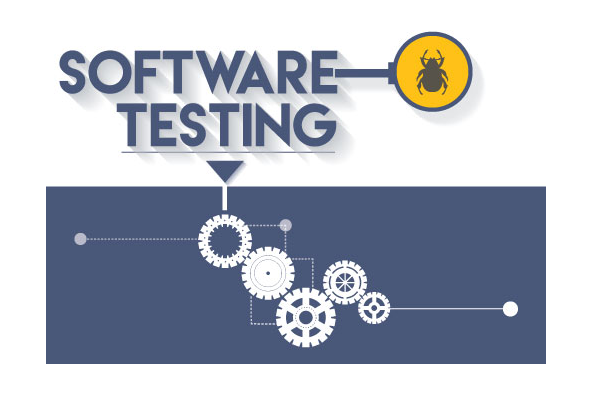Software errors or bugs are prevalent but so damaging that they cost the U.S. economy approximately $59.5 billion each year in which more than half of the cost is borne by software users while the remainder by software developers.
The study conducted by National Institute of Science and Technology also claimed that having a 100% error free software might not be possible; however, more than a third of these costs can be eliminated by improving the testing infrastructure that allows software developers to identify any defects in the initial stage of development.
According to NIST Director Arden Bement, the impact of software errors is enormous. Today, every business in the United States relies on software. Be it at the product’s development stage or distribution, software is considered an important aspect, regardless of business size.
Did you know that 44% of software errors are found by the customers? Let’s admit it, if you are not going to take the time out to test your software for perfection, it will ultimately get in your consumer’s hands who will be the first to discover errors and bugs. Delivering a faulty product to the consumer will not only ruin your brand image but will also cost the company more in terms of time and money to fix errors that are found a product is launched.
In simple words, the need for testing cannot be overemphasized. And although software testing is mainly conducted to debug software and minimize errors, it also ensures that customers can use the software with ease, and the product meets all the specifications of the consumers as well as the stakeholders.
The next step:
Luckily for software developers, there are a number of software testing tools available in the market. These can be easily integrated during the development stage of software to ensure the efficiency of your product. Here are the top 8 tools you can use for software testing:
1. Silk Central
Borland’s Silk Central can handle various software test management tasks including test creation, test execution, analysis, reporting, and much more. Silk Central can be easily integrated with issue tracking and source control tools while plug-ins can also be added for a better testing experience.
2. Accelq
Accelq allows software developers to write customized test scripts that can be recorded and used for future use. The testing cycle can also be integrated with all the latest apps as well. The best feature of Accelq is that it doesn’t require users to learn a coding language or a new skill to manage the testing process. Just enter the code in simple language, and you are good to go.
3. Testuff
Provided as a SaaS model, Testuff has all the features you need in a management system. It also supports automation testing modules including Rational Robot, Test Complete, and Selenium. This tool works well with many standard bug trackers as well while users can also upload videos for better documentation of bugs and errors.
4. Zephyr
Zephyr – another player in the test management space emphasizes explicitly on real-time visibility and on-demand testing. It is mainly developed for small to mid-sized businesses and is not suitable for enterprises. However, it does support all phases of the testing process including creation, planning, execution, and analysis. It can be used for both – manual and automated tests and integrates with all the leading platforms like JIRA and Bugzilla.
5. IBM Rational Functional Tester
The Rational Functional Tester by IBM is an automated functional and regression testing tool that supports a variety of apps such as .Net, Java, Adobe PDF Documents, PowerBuilder, Ajaz, Dojo Toolkit, zSeries, iSeries, iSeries, and web-based software. It also allows testers to conduct tests through the storyboard method and test scripting.
6. TestPlant Eggplant Functional
The TestPlant eggplant automation testing tool utilizes a different approach than others in the market. It offers image-based UI testing which looks at the screen of a device from the user’s perspective rather than according to code.
The TestPlant eggplant functional testing tool supports all major platforms including web, motile, and POS systems. The best feature of the TestPlant eggplant testing tool is that testers with average to none automation skills can also use it with ease.
7. Validately
With Validately, you can test live websites, images, and analyze any issues that make usability difficult for your customers. Validately checks on your customers or finds testers from its set of networks. You can also talk to these testers live and assess any defect they are facing in real-time. Additionally, Validately provides user feedback before the coding takes place which saves cost, time, and effort in the long run.
8. QA Complete
The reporting tool allows easy collection of all data related to tests, the number of defects found, and how they were treated. It is easy to learn and can be used as the central data management tool.
QA Complete can take data from any testing software including TestComplete, SoapUI, Selenium, and manual tests. Furthermore, QA Complete is fully customizable, and you can conveniently integrate it with any other testing model of your choices such as the Waterfall, Agile, or hybrid.
Final Word
James Willet believes, “Software testing is much harder than software development.” However, it is an integral part of the software development process and should be conducted with as much efficiency as you would put in creating and writing the codes. With the help of these tools, you can quickly implement the testing procedure in your software development cycle and ensure the maximum satisfaction for your consumer.
About the Author:
Alycia Gordan is a freelance writer who loves to read and write articles on healthcare technology, fitness and lifestyle. She is a tech junkie and divides her time between travel and writing. You can find her on Twitter: @meetalycia





